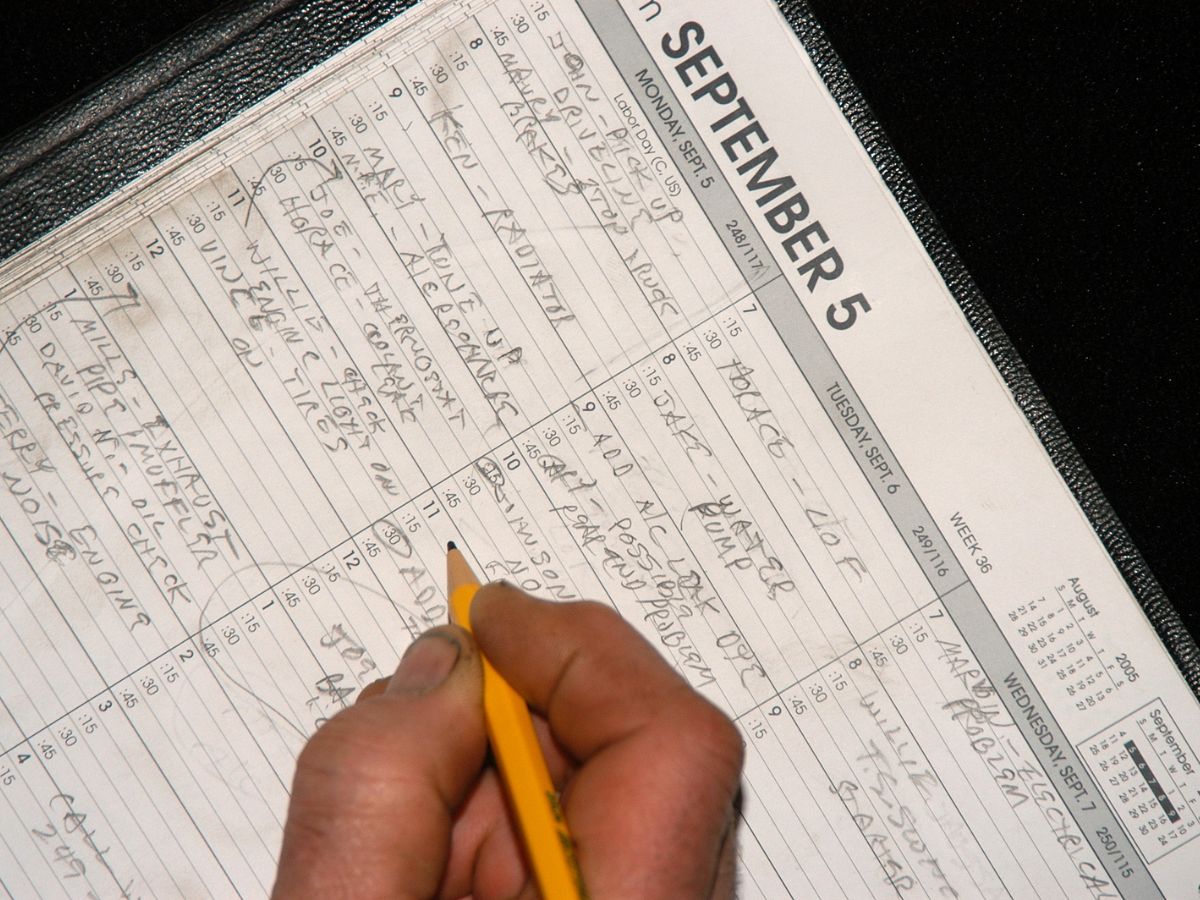Fast To Learn, Easy To Use
When you choose Dataforma, you’re making a conscious decision to improve your business’s daily processes by utilizing all of the platform’s incredible range of features. The goal? Help your business start saving time and money right away!
The short-and-sweet onboarding process involves coordinating with one of our Dataforma coaches to determine the best plan of action based specifically on your company’s needs when using our service management software.
Training sessions take place virtually and take no more than one to two hours max. You can have your meetings recorded as an option to allow you and your team to watch them again at any time. And the great news is that you can easily learn all of Dataforma’s main functions — from work orders to projects — in 2 weeks!
In order for your company to get the most out of our training, we make sure to collaborate with your team to determine the best schedule for your staff. From there, we can better organize which users should attend which session(s) and/or if we need to break down one training session into multiple groups.
In this article, we’ll break down what you will learn and how your team can get off to a fast start with our Quick Start Guide.
The Foundations of the Database
In our first training session, you’ll learn how to enter and use the various building blocks of the database, such as contacts, companies, and buildings.
To get started we’ll help you set up multiple companies and building locations using several examples from your rolodex of existing customers. This process can be done manually or using our import tool to help get all your companies, building names, addresses, on-site contacts, contact information (i.e. email & phone numbers), billing information, and so forth.
This process will also teach your team how to foster relationships within the roofing software; that’s why we highly recommend that all users attend this session.
You’ll also learn how to set up Dataforma users and figure out what roles and permissions they will need to use the database to help them more efficiently perform their daily job duties.
There are two ways to build your database:
1- As-you-go approach: If you want to go live in a week, don’t worry about your old data or historical records of all your customers. Those can all be added later on. Instead, we’ll implement the information in real-time as it comes in, meaning you can start creating work orders and scheduling them without having to wait for a backlog of data to be imported.
2- Upload your fresh data: With this approach, you’ll learn to take your core customers and create their profiles with an ID. Using Excel, you can do a quick import to get all your largest customer(s) set up in it in the system in batches while linking the company, building location, and associated contacts.
It’s key that you set up the company first before you upload all of the service locations associated with the account. For instance, let’s say that you have a property management customer with 150 building locations. Using one Excel file we can upload all of the associated companies’ 150 properties all at once by linking them to the company’s Dataforma company ID. Plus, if you need help uploading your database or getting set up, we’re happy to assist you along the way.
Start Creating Work Orders From The First Session
In the first session, not only will we teach you how to set up companies, buildings, and contacts in the system, but you’ll also learn how to create work orders so your field and office teams can immediately start taking advantage of all of Dataforma’s core features from day one.
From there, we’ll walk you through how to create work orders, how to schedule them, and how to assign them to your field crews in real time. Once you’ve mastered this, we’ll introduce you to Dataforma’s larger work order process, from dispatch to field reporting to closing out the work order and invoicing.
We can coordinate a live-training session where you can schedule a work order for one of your service techs in the field. The field tech will then go through the process of documenting when they arrive on-site, inputting notes on what they did while on-site, taking before/after photos, completing the work order in the field, and sending it to the office for review.
Once the field tech has completed the work order, the office gets a notification, and then they can review the work order information that the tech submitted, close out the work order, and invoice the customer that same day.
Additionally, we’ll show your office team how to create and manage various reports, such as daily job log field reports, safety reports, cost reports, status reports, and customer reports. We’ll also review the accounts receivable module to ensure you’re able to create credit memos, payments, and other advanced invoice functions.
Dataforma Mobile App
This tutorial will be taught to service technicians who will be using the Dataforma Mobile App to view their work orders.
Field techs will learn how to enter details of their tasks including entering a description of work performed, labor hours, materials used, etc. On top of that, they’ll learn how to upload before/after photos, obtain authorization signatures, and complete work orders, all in real time.
1-Hour Inspection Process Learning
This session is designed for companies that provide inspections or roof evaluations. It will help them create and manage roof assessment reports in our Dataforma Mobile App in no time at all!
If your company performs any type of roof inspection, we provide a standard template that has all of the basic fields to provide a comprehensive roof inspection report for your customers. You’ll learn how to use our standard template, input notes, upload photos, add recommendations, and/or scope for recommended repairs.
The process of learning to set up a custom checklist to then use in the Dataforma app is a quick and easy process to pick up. One of the core components is actually creating the inspection checklist which is easy if you already have one that you’re using for your inspections. If you require a custom inspection template we can help and fortunately it won’t affect the process of learning the tool’s main functionality.
Of course, every company is different, so you may have specific requests for performing roof inspections. No problem, because Dataforma is well-versed in designing and producing custom templates for any business need. You can even send us an email with a copy of your current inspection process with a basic inspection outline before we begin training, so we can help pre-build a customer inspection template that we know will work perfectly for you.
You’ll also learn how to use the site tags feature, allowing you to super-precisely place a GPS pin on a specific area of the roof to call out a defect. This is extremely helpful because if the customer elects to perform recommended repairs, the field techs can easily locate the areas included in the recommended scope of repairs.
Complete Project Management: Approval To Closeout
This training session will show you how to create and manage larger projects, such as re-roofing or new roof installations.
It will also cover how to create proposals, manage and track proposals, update the status of a project, and use the bid calendar on our Dataforma Mobile App.
We’ll go through the various steps in the project creation process to set up bids and assign them to the individual estimators. You’ll learn how to access the projects they have been assigned to through the message board, mark projects as approved, schedule a project, create change orders, upload documents, and complete the project by using your company’s examples.
Dataforma’s Project Management software will assist you in placing purchase orders for materials, scheduling and mobilizing projects, tracking labor and material costs, managing your works-in-progress or backlogs, invoicing, and even closing out.
In a more advanced project training session, we can teach your team how to use correspondence and messaging to increase internal communication between estimators, project managers, and other office staff. This includes reports on leads, bids, proposals, contracts, sales activity, works-in-progress, project closeout, and more.
Depending on the company’s needs, we can introduce and help set up more advanced project features such as project budgets, POs & A/P invoices, and even show your team how to create custom reports to help you run a better business.

Welcome to the Client Portal
Last but not least, the client portal training session will cover how to set up and provide your client access to the portal database. You’ll learn how to create customer accounts, control what your customers can see through the portal, and upload documents for client review or approval.
In addition, we’ll teach you how to see client portal-reported work orders, receive notifications, and schedule them accordingly.
Finally, by using Dataforma’s client management software, you’ll be able to see what the client sees, and you’ll learn how to train your customer on how to use the client portal, including guidance on how to navigate its features and efficiently report work orders.
Save Time. Save Money. Be More Productive
The number one feedback we get from Dataforma users is just how much time they save by condensing down multiple daily tasks into a few simple keystrokes.
For example, if a company was still relying on an “old school” paper and pencil process, such as getting the form and ticket after a field tech finished the work on-site, it would probably take two or three days to review, closeout, and invoice the work order.
With Dataforma, you’ll have all of the ticket’s information at the exact moment the field technician marks the work order complete, so you can instantly review the completed work order and create an invoice for the customer that same day.
In other words, with an antiquated approach that relies on paper tickets, it could take up to 2 weeks before the work is scheduled, completed, and the customer gets the invoice in their hand. With Dataforma, now it can be done within a day or two.
Also, the roofers performing the work can take photos from the field through our Mobile App and upload them immediately into the database. No more wasting precious time day after day by manually creating a service report and invoice to send to the customer— with Dataforma you can take back your time and get back to the work that matters most!
Ready to Join Dataforma?
These easy-to-learn training sessions will help you and your team become experts in no time and start to fully realize all of Dataforma’s efficient features that can massively help your business do more.
With Dataforma, every user has unlimited customer support, and we’re happy to offer additional training sessions known as DFU (Dataforma University).
These sessions are designed to help employees get away from their office’s daily hustle and bustle and focus on more advanced features.
Each year, we also host user conferences, known as the PSU (President and Super-User) conference. This event is a day-long gathering where some of our best users from different competitive markets discuss and share best practices on how they use the database to maximize their businesses. In addition, contractors have the ability to share with the Dataforma team what new functionality they would like us to develop and deploy next!
Because we want to help you meet your 2023 goals, we’re offering a 1-year special price on all of our products good through the end of 2022. You can get on board with this deal by signing up today!









